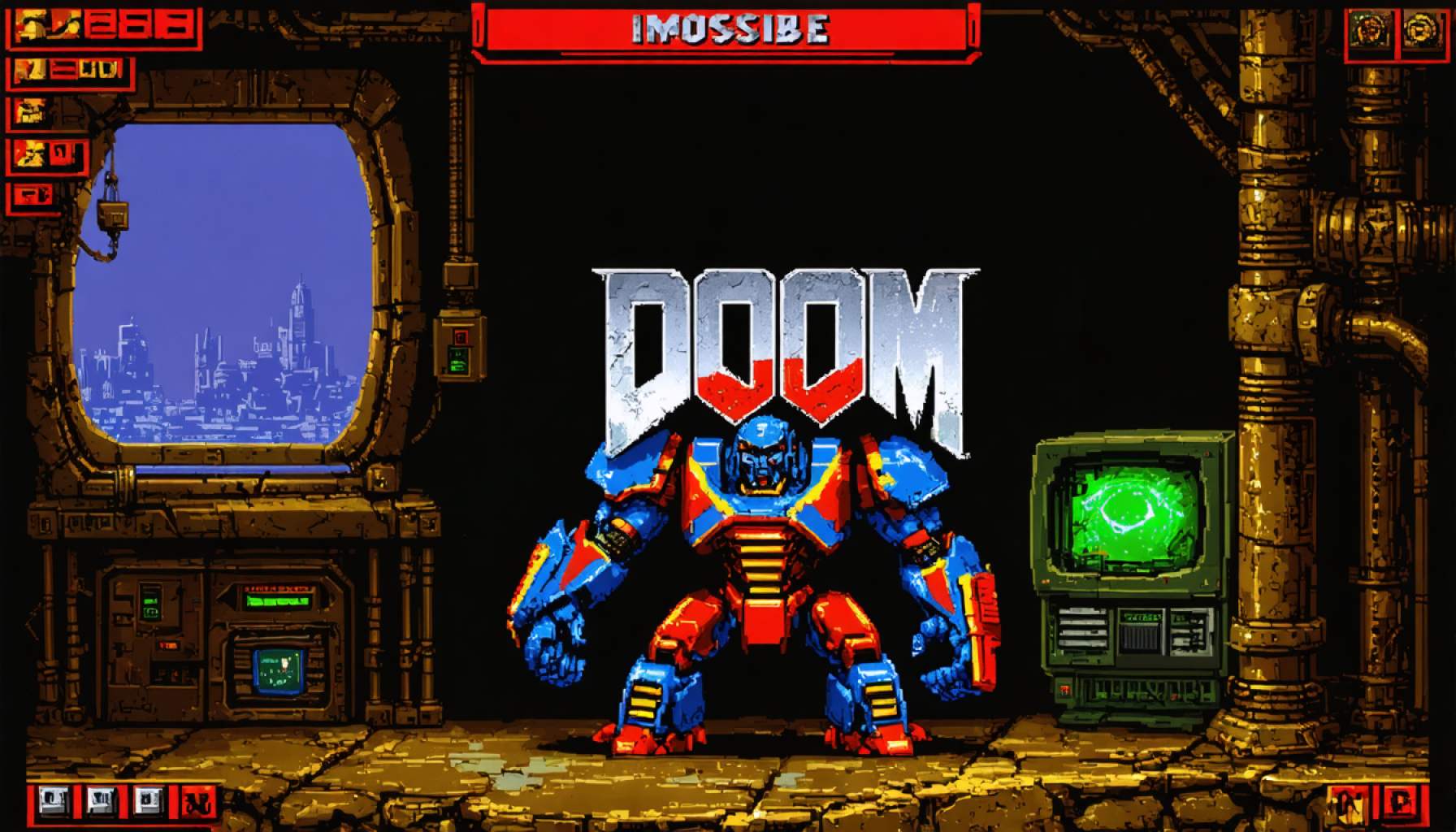- Developer Jonas “Indyjo” Eschenburg is adapting the classic game Doom for the Atari ST under the project name STDOOM, blending nostalgia with innovation.
- Eschenburg’s work involves translating Doom’s 256-color palette to the Atari ST’s 16-color display, using advanced dithering techniques to simulate depth and vibrancy.
- Key advancements include integrated keyboard support, enhancing interactivity, while the game currently runs in an emulation environment with 8MB RAM, a significant enhancement for the Atari ST.
- The project’s progress highlights the persistent human drive to innovate despite constraints, illustrating that technological limitations can inspire creativity.
- This endeavor underscores the enduring appeal of retro gaming, showcasing the intersection of nostalgia and modern technology.
- Followers can track Eschenburg’s journey and insights on Twitter via @indyjonas.
In a world where nostalgia meets innovation, the legendary Doom has made a surprising leap onto the classic Atari ST, thanks to the ingenuity of developer Jonas “Indyjo” Eschenburg. This thrilling development not only captivates retro gaming enthusiasts but also showcases the art of pushing technological boundaries.
Under the project name STDOOM, Eschenburg has begun the Herculean task of translating Doom’s fast-paced, blood-pumping experience to a platform once thought incapable of handling such a feat. Modern gamers might take for granted the seamless graphics and fluid gameplay of today’s titles, but transforming Doom’s original 256-color palette into the Atari ST’s limited 16-color display requires more than just technical skill; it demands creativity and a magician’s touch.
With ingenuity at play, Eschenburg employs advanced dithering techniques. This method cleverly manipulates the available colors to simulate a broader spectrum, breathing vibrant life into what was once grayscale. Each pixel is carefully orchestrated to create the illusion of depth and richness, much like a painter who conjures a lush landscape with a limited palette.
Progress hasn’t stopped with colors and visuals. Keyboard support has been successfully integrated, laying the groundwork for a more interactive experience. Yet, this artistic evolution, for now, remains confined to the realm of emulation, with the game running in an environment augmented by 8MB of RAM—an unthinkable upgrade for the Atari ST in its heyday.
While we await a fully playable version on the actual hardware, Eschenburg’s efforts highlight a fundamental aspect of human nature: the quest to innovate within constraints. In this dance between old and new, STDOOM stands as a testament to the perseverance and creativity of developers who refuse to accept limitations as the final word.
In an era where technology rapidly advances, revisiting machines of the past serves as a celebration of history and a challenge to the conventional wisdom that old equals obsolete. As we cheer on Eschenburg in his mission, we are reminded of the timeless synergy between nostalgia and modernity. For every follower tracking this journey, @indyjonas offers a window into a world where classic gaming meets cutting-edge innovation.
The Incredible Revival: How Doom Found New Life on the Atari ST
Introduction
In the tech-centric universe, where innovation reigns supreme, classic games like Doom are finding new homes on legacy systems. Thanks to developer Jonas “Indyjo” Eschenburg and his project, STDOOM, this legend has remarkably transitioned to the iconic Atari ST. This endeavor not only entertains retro gaming fans but also underscores the art of overcoming technological limitations.
The Art and Science Behind STDOOM
Eschenburg’s STDOOM project exhibits not just technological savvy but artistic ingenuity. Transforming Doom’s original graphics to fit the Atari ST’s limited 16-color display is a feat. This involved advanced dithering techniques that skillfully simulate a wider color spectrum, creating visual richness from simplicity.
Real-World Use Cases
– Retro Gaming Events: Enthusiasts can showcase this adaptation at retro gaming conventions, highlighting technological evolution.
– Educational Demonstrations: Educators can use STDOOM to teach programming and graphic design principles, focusing on creativity in constraint-based environments.
Technical Insights and Compatibility
Currently, the project is limited to emulation, with 8MB of RAM—an enhancement that was once unimaginable for the Atari ST. While the fully playable version on the original hardware is anticipated, this interim solution offers a glimpse into what’s possible when old technology meets modern creativity.
Compatibility and Specs
– Platform: Atari ST (Emulation)
– RAM Requirements: 8MB
– Control Support: Keyboard support integrated
– Pixel Rendering: Advanced dithering for color approximation
Market Trends and Predictions
Reviving classics for vintage systems is a burgeoning trend showcasing a mix of nostalgia and innovation. The popularity of remastering and porting games like Doom hints at a growing market for enhanced retro gaming experiences. This trend ties into the broader retrospectives in gaming and technology, as users yearn for nostalgic familiarity enhanced by modern capabilities.
Controversies and Limitations
An inherent limitation of STDOOM is its current reliance on emulation, which might not fully satisfy purists who desire the authentic feel of native hardware. Potential controversy lies in balancing modern enhancements while respecting original limitations. A cultural debate persists: Does altering these games dishonor their legacy?
Quick Tips for Retro Gaming Enthusiasts
1. Stay Updated: Follow Indyjo on Twitter for real-time updates on STDOOM.
2. Try Emulators: Test different emulators to experience variations in graphics and performance.
3. Experiment with Graphics: Experiment with color settings in emulators to customize your visual experience.
Actionable Recommendations
– For Developers: Explore updating other classic titles using similar methods of creativity under constraints.
– For Retro Fans: Organize collaborative virtual meetups to discuss developments in retro gaming adaptations and celebrate milestones together.
Conclusion
The remarkable journey of Doom onto the Atari ST through STDOOM not only commemorates historical innovation but serves as an inspiring call to challenge the boundaries of what’s possible. It underscores how legacy systems can host modern ingenuity, celebrating the creative synergy of past and present gaming cultures.
